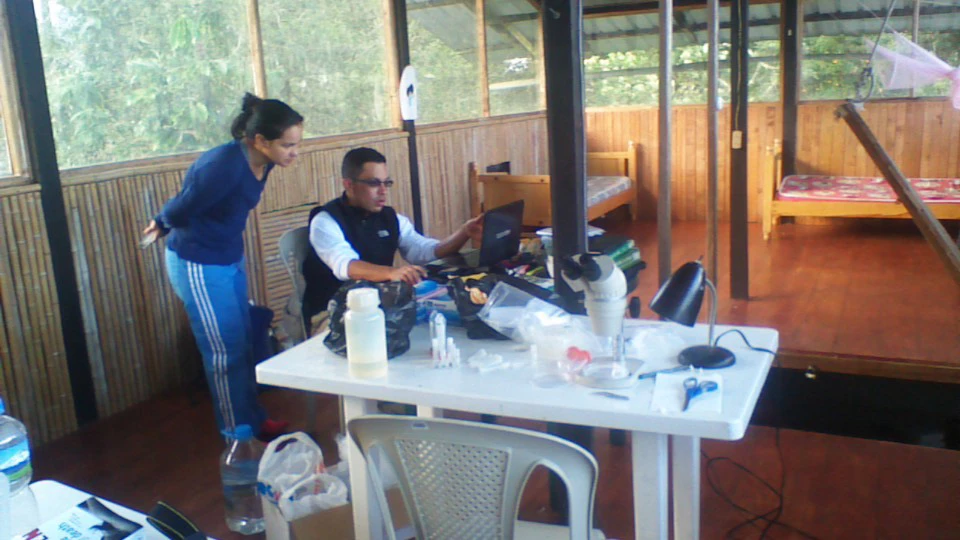Adrian in the Amazon - part 4
, 8 April 2015
We have now settled into a routine at the Yanayacu Biological Station. Our days are spent out in the forest collecting flies and in the evenings we examine the results of the days efforts, preserving the specimens and collating data about where and how we found them. Josenir and I are especially interested in a group of flies known as Hemerodromiinae and in our fieldwork efforts we mostly target streams, rivers and springs where we expect to find them.
The terrain in this part of the Andes is generally very steep and many of the stream banks have washed-out and slipped allowing a dense understorey of bamboo to grow. Because of this, simply getting into the streams can involve much machete work hacking through the vegetation and a slithering half-controlled descent of muddy slopes until we finally splash into the stream bed and can begin work. Our general procedure is to wade upstream using a net to sweep insects off surrounding vegetation, or selectively picking flies off wet rocks, wet moss etc. It is hard, dirty and wet work and we inevitably return soaked to the skin and mud-splattered but we have been rewarded by many interesting finds.
Yesterday we found perhaps 30-50 species (it’s not really possible to be more precise until we begin detailed examinations back in Cardiff and Manaus) and we think that around 90% of these will be completely new species that have yet to be described. I was particularly delighted to find no less than 5 new species of the genus Chelipoda. I have studied this genus intensively in the past and attempted to construct a ‘phylogenetic tree’ showing the systematic relationships between the living species and inferring the sequence of their evolution.
It is not yet clear if most South American species of Chelipoda evolved from ancestors that migrated south from North America in the distant past or if they have developed from so-called ‘Gondwanan’ species - ones which originated on the ancient supercontinent of Gondwana before it broke apart and its fragments drifted apart to form modern day New Zealand, South Africa and Patagonia for example. Careful examination of the Ecuadorian species should reveal clues hidden in their anatomy as to which theory (if any) is correct.
